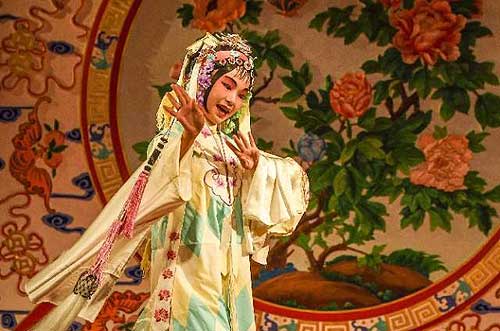Kunshan: The home of Kunqu opera
(chinadaily.com.cn)
Updated: 2016-03-23
Kunqu opera originates from the late Yuan Dynasty some 600 years ago in the regions of what is now known as Kunshan, Jiangsu province.
The operatic form came into its prime during the Ming Dynasty (1368-1644) when the classic play The Peony Pavilion was written.
The Palace of Eternal Youth and The Peach Blossom Fan, both created during the early Qing Dynasty (1644-1912), confirmed the opera's preeminence in China.
May 18, 2001 was the day that Kunqu opera was included in the first intangible cultural heritage list, announced by the UNESCO.
In November 2008, Kunqu opera was inscribed on the Representative List of the Intangible Cultural Heritage of Humanity.
According to the UNESCO website, Kunqu opera is "characterized by its dynamic structure and melody (kunqiang) and classic pieces such as the Peony Pavilion and the Hall of Longevity. It combines song and recital as well as a complex system of choreographic techniques, acrobatics and symbolic gestures."
In 2015, the eighth state-run Kunqu opera theater was established in Kunshan, to mark the place that had birthed and nourished the oldest operatic form in China.
The theater's inception was a milestone in the city's efforts to preserve and develop the opera art. The Kunqu opera training program covers a number of primary schools and middle schools within the city. 18 of the graduates from the Kunqu opera classes earned the special Plum Blossom Awards, which were specially made for youth and issued by the China Theater Association.
A number of Kunqu opera troupes are active in the city, including the Kun Yu Tang, Yang Shousong studio and Yu Jiulin studio. These art groups play important roles in fostering talent and developing and performing Kunqu opera.
Edited by Jacob Hooson
 |
|
A young Kunqu opera performer [Photo from Kunshan Tourism Resort] |
News
Four special holiday dishes to try in Kunshan
Like Christmas Day in the West, it is traditional in China to cook up an enormous feast on Chinese New Year, with dinner tables groaning under the weight of dozens of dishes.


